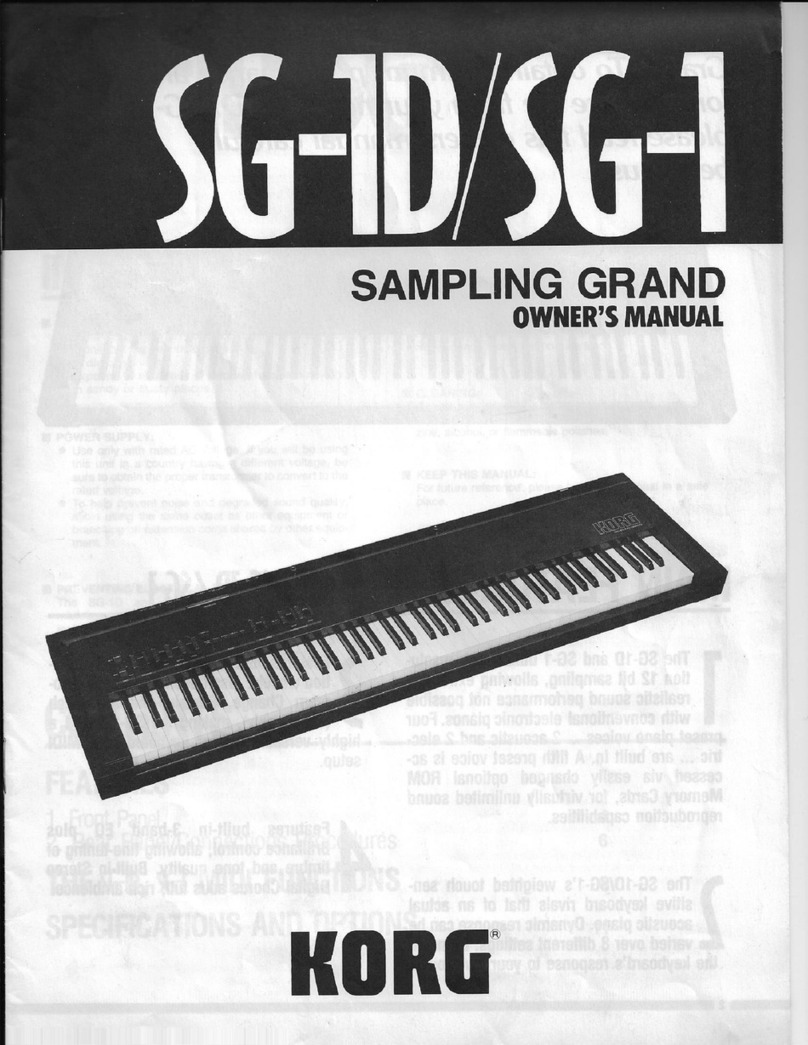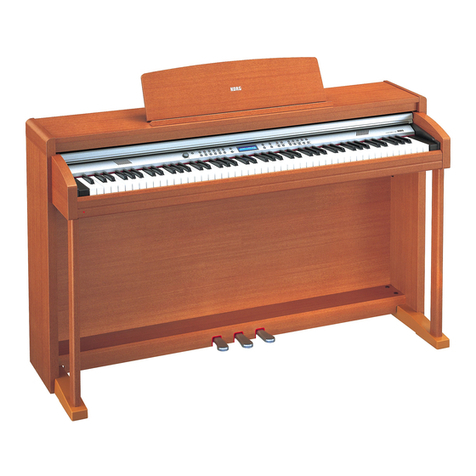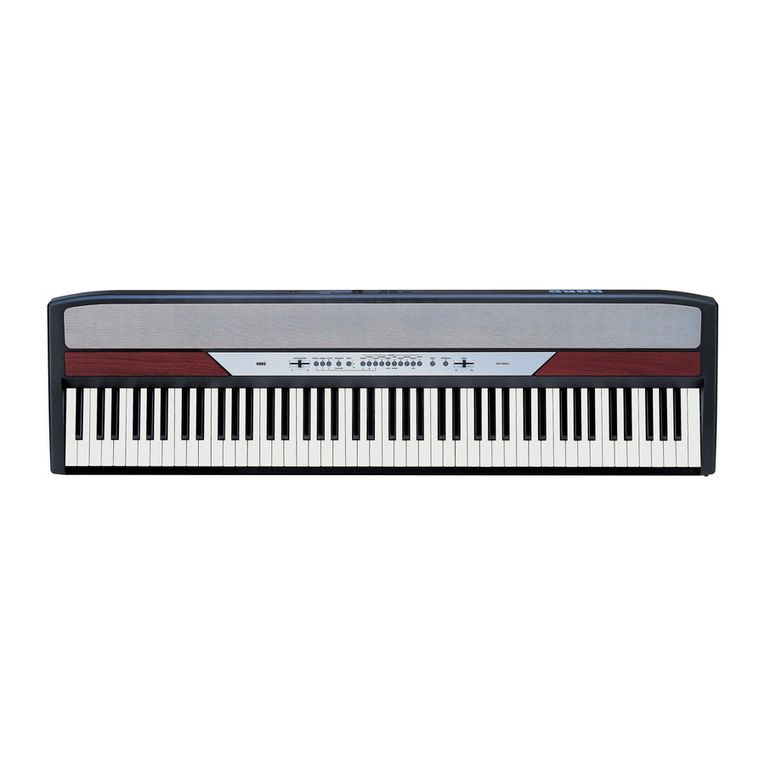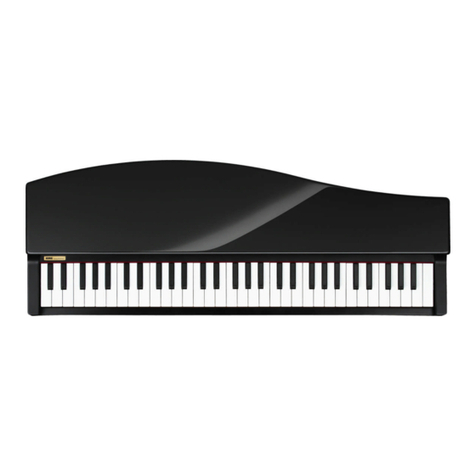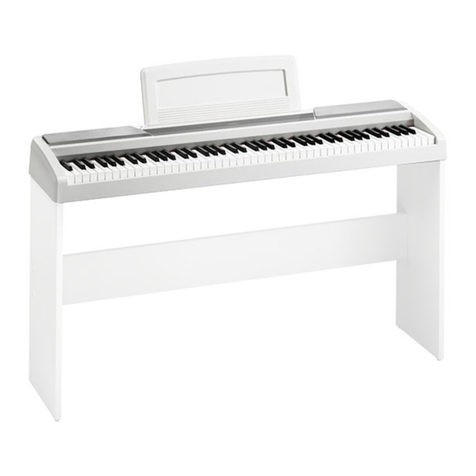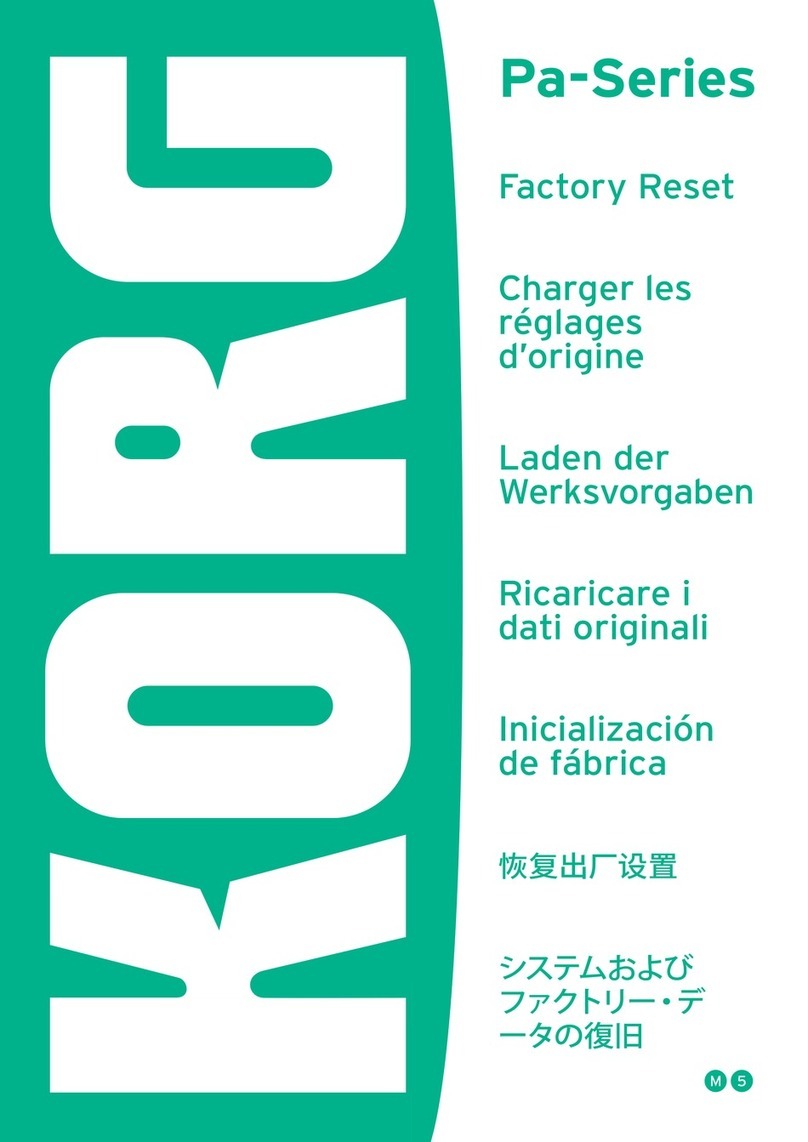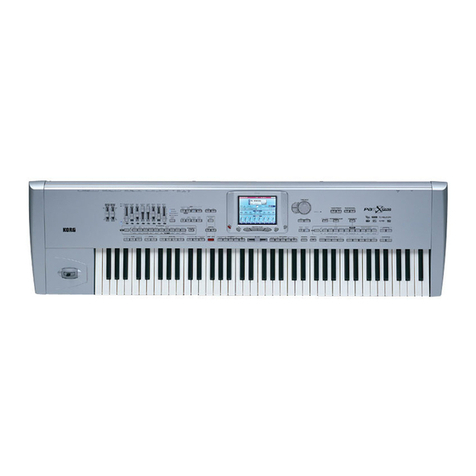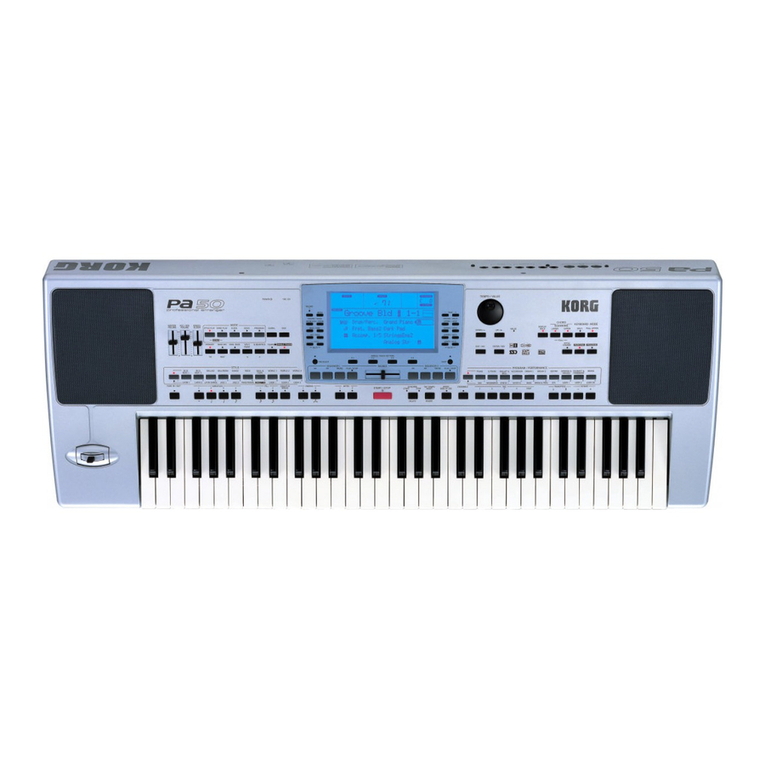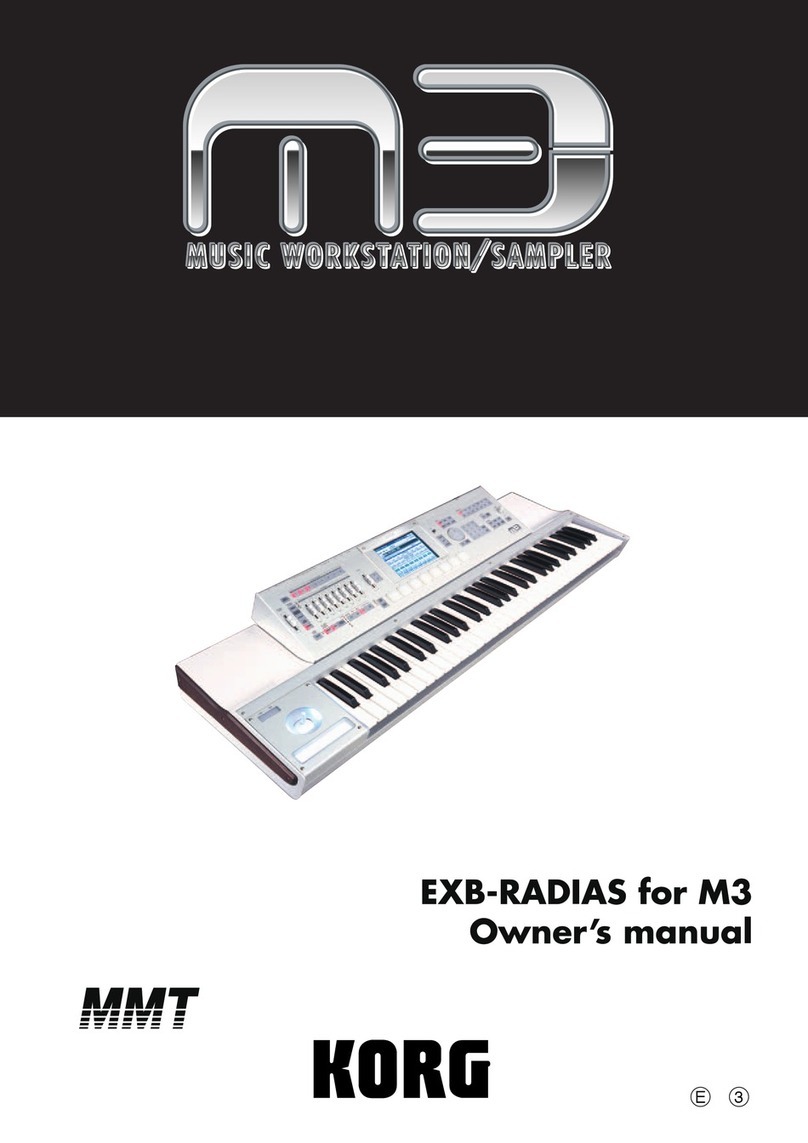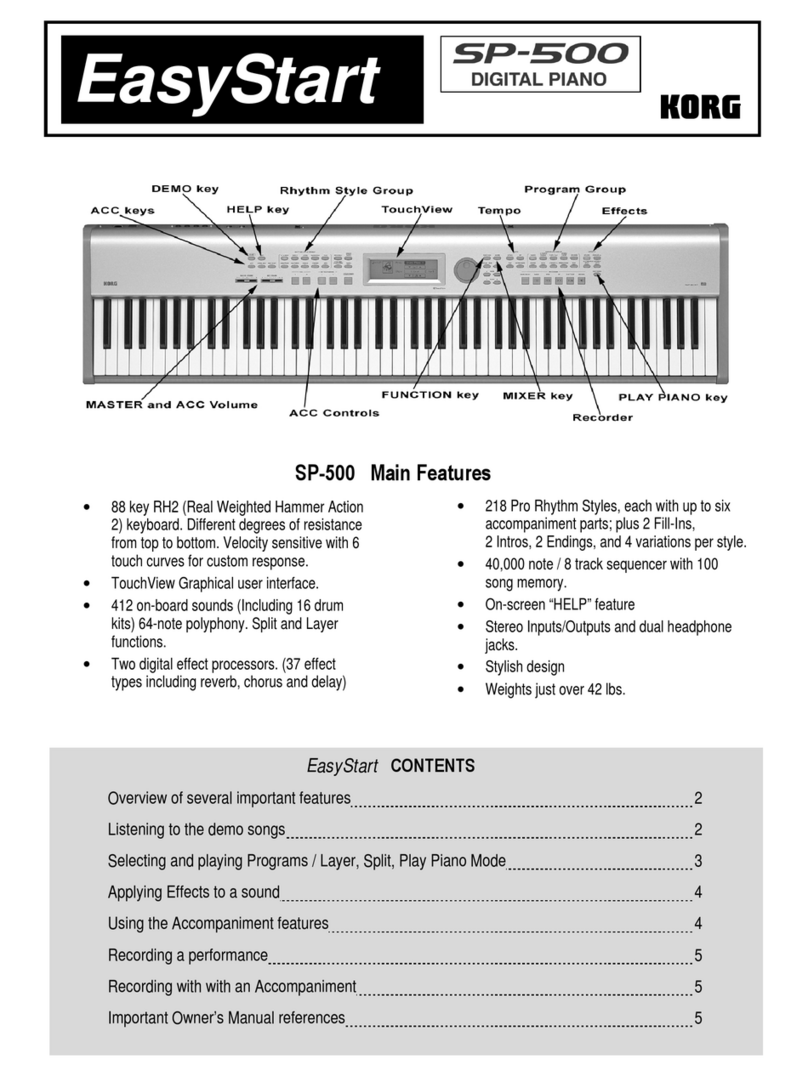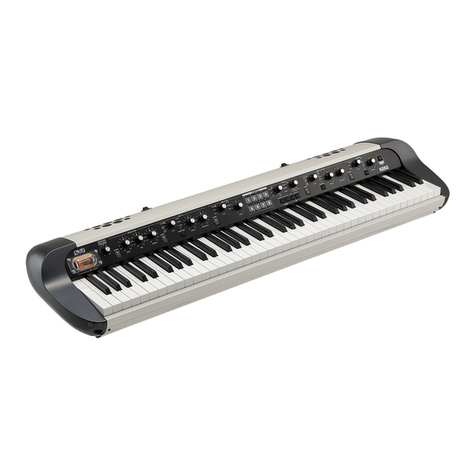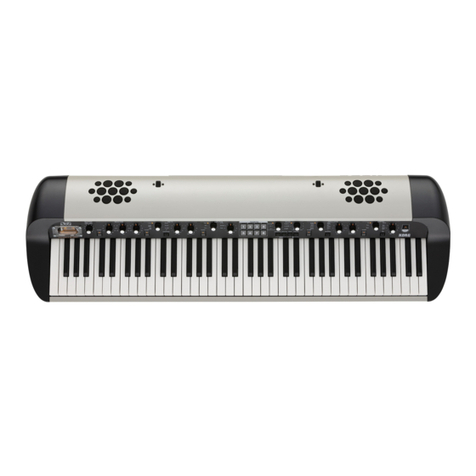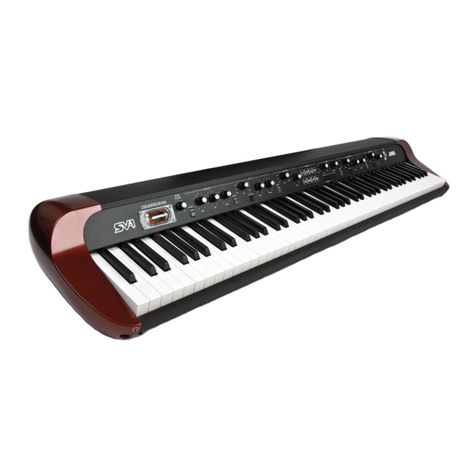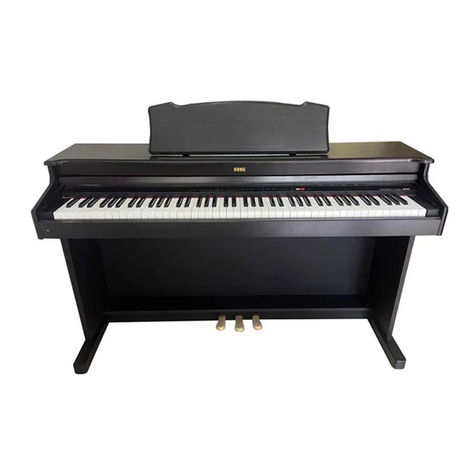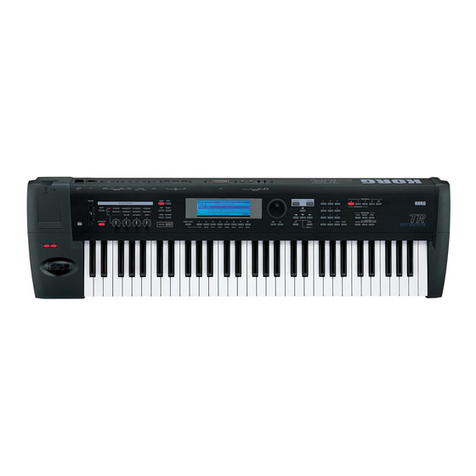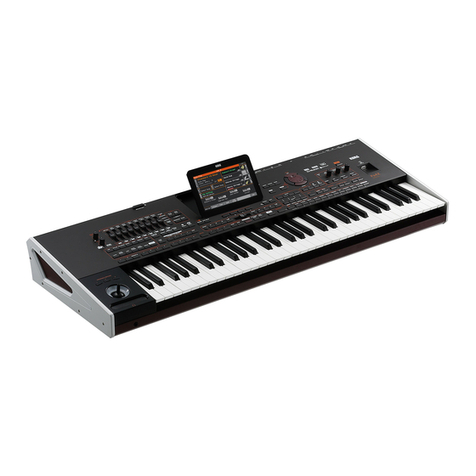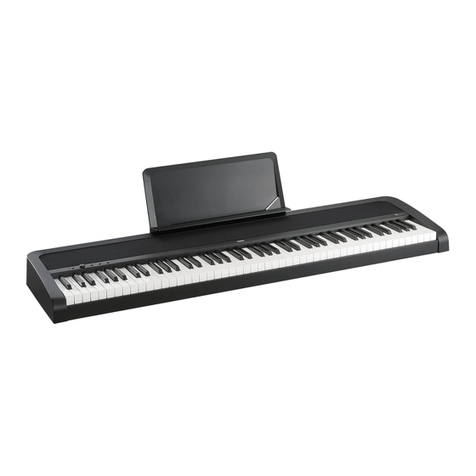
6
Sounddemosonglist
display
Soundbuon Songtitle Composer
d01 PIANO1 Jardins sous la pluie C.Debussy
d02 PIANO2 Danny boy Irish Folk Song
d03 E.PIANO1 Jam Session N. Nishi
d04 E.PIANO2 In Memory M.Giesel
d05 HARPSI/CLAV Invention No.8 J.S.Bach
d06 VIBES/GUITAR Jazz in Spain KORG original
d07 ORGAN1 Improvisation M.Geisel
d08 ORGAN2 Toccata in D moll J.S.Bach
d09 STRINGS Scoring Interlude M.Geisel
d10 CHOIR Autumn Flares M.Geisel
Listening to a piano song
1. PressthePIANOSONGbuon.
The PIANO SONG and PIANO1 LEDs light up, and the
number for the piano song (001) appears in the display.
1,3
2. Aerabout3seconds,thePIANO1LEDblinks,and
playbackofthepianosongbegins.
When playback of the rst piano song is nished, play-
back continues sequentially with second, third, etc.
When playback of the twentieth piano song is nished,
playback begins again with the rst piano song.
Listeningtoaspecicpianosong
The number for the song that you want to hear can be
selected by pressing the UP or DOWN buon beside the
display. If a dierent number is selected by pressing the
buons, even while a song is being played, playback of
the corresponding song will begin aer a few seconds.
3. Tostopplaybackofapianosong,pressthePIANO
SONGbuonagain.
Pianosonglist
No.
display
Songtitle Composer
1 001 Etude Op.10-12 F.Chopin
2 002 Claire de lune C.Debussy
3 003 Fantaisie-Impromptu Op.66 F.Chopin
4 004 Waltz No.6 Db-major Op.64-1 F.Chopin
5 005
“Prelude 1” The Well-Tempered
Clavier, Book 1 J.S.Bach
6 006 “Turkish March” Sonata K.331 W.A.Mozart
7 007 Arabesque No.1 C.Debussy
8 008 Für Elise L.v.Beethoven
9 009 Liebesträume Nr.3 F.Liszt
10 010 La Campanella F.Liszt
11 011 Nocturne Op.9-2 F.Chopin
12 012 Spring Song Op.62-6 F.Mendelssohn
13 013 Reets dans I'eau C.Debussy
14 014 Gymnopédie No.1 E.Satie
15 015 Etude Op.10-3 F.Chopin
16 016 Old Feather Blues KORG original
17 017 La lle aux cheveux de lin C.Debussy
18 018 The Entertainer S.Joplin
19 019 Sunowers KORG original
20 020 Amazing Grace Hymn
Using the LINE IN/LINE OUT jacks
Use the LINE IN jack to listen to the sound from another
musical instrument or sound system through the speakers
of the SP-280. Connect this jack to the output jack of the
other musical instrument or sound system.
Use an audio cable with a stereo mini plug inserted into
the SP-280 and a plug on the other end appropriate for the
connected device.
Use the LINE OUT jacks, if you want to connect your SP-
280 to a mixer, stereo hi-, or a couple of active monitors.
When using a stereo hi-, connect the LINE OUTs to the
AUX or LINE inputs. For mono amplication, connect only
the L/MONO jack.
You must only connect devices with the power turned o.
Careless operation may damage the SP-280 or the device
where it’s connected, or malfunctions may be caused.
Connection cables are sold separately. You will need to
obtain the appropriate commercially-available cables
for your equipment.
Listening to demo performances
The SP-280 contains a total of 30 demo performances (10
demo songs using 10 high-quality sounds and 20 familiar
piano songs using the piano sounds).
During playback of a sound demo song, you can play
using the keyboard; however, the sound cannot be
changed by using the sound buons.
During playback of a sound demo song, the settings
for eects (reverb and chorus) cannot be changed.
Listening to a demo song
1. SimultaneouslypressthePIANOSONGbuonand
theTRANSPOSEbuon.
The PIANO SONG LED blinks, and the LEDs for the
sound buons blink sequentially.
In addition, the number for the sound demo song (d01)
appears in the display.
1,3 1
2. Aerabout3seconds,thePIANO1LEDblinks,and
playbackofthedemosongcorrespondingtothatbut-
tonbegins.
When playback of the PIANO1 demo song is fin-
ished, playback continues sequentially with PIANO2,
E.PIANO1, etc. When playback of the CHOIR demo
song is nished, playback begins again with the PIA-
NO1 demo song.
Listeningtoaspecicsounddemosong
When the LEDs for the sound buons are blinking se-
quentially, press the sound button for the demo song
that you want to hear. If a different sound button is
pressed, even while a song is being played, playback of
the corresponding demo song begins after a few sec-
onds.
In addition, a song can be selected by pressing the UP
or DOWN buon beside the display.
3. Tostopplaybackofademosong,pressthePIANO
SONGbuonagain.
